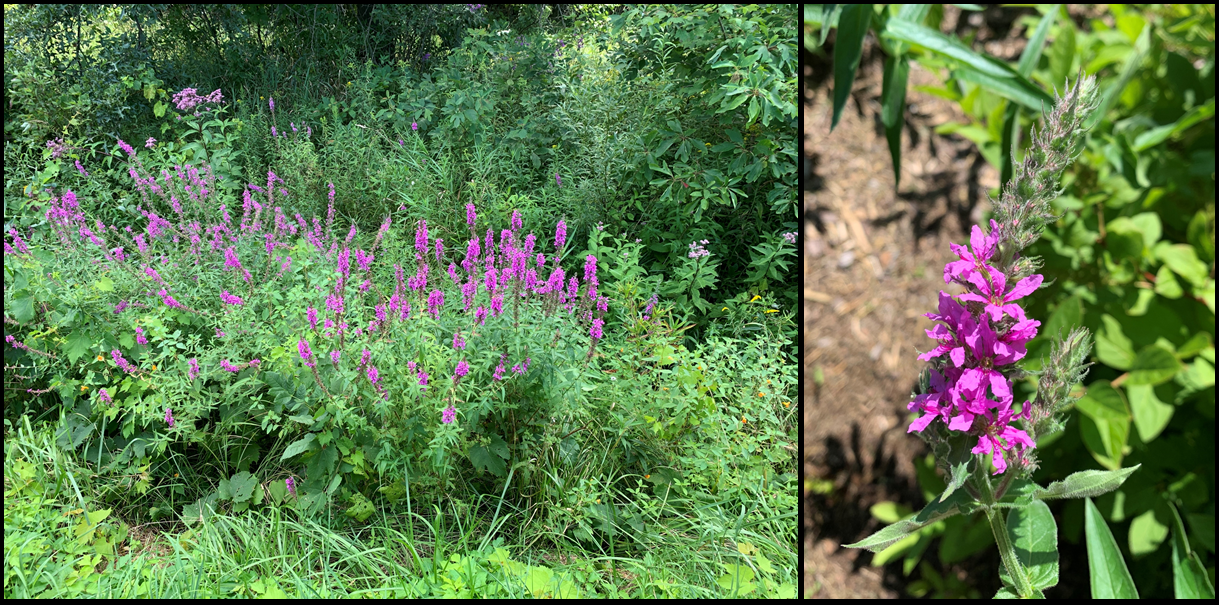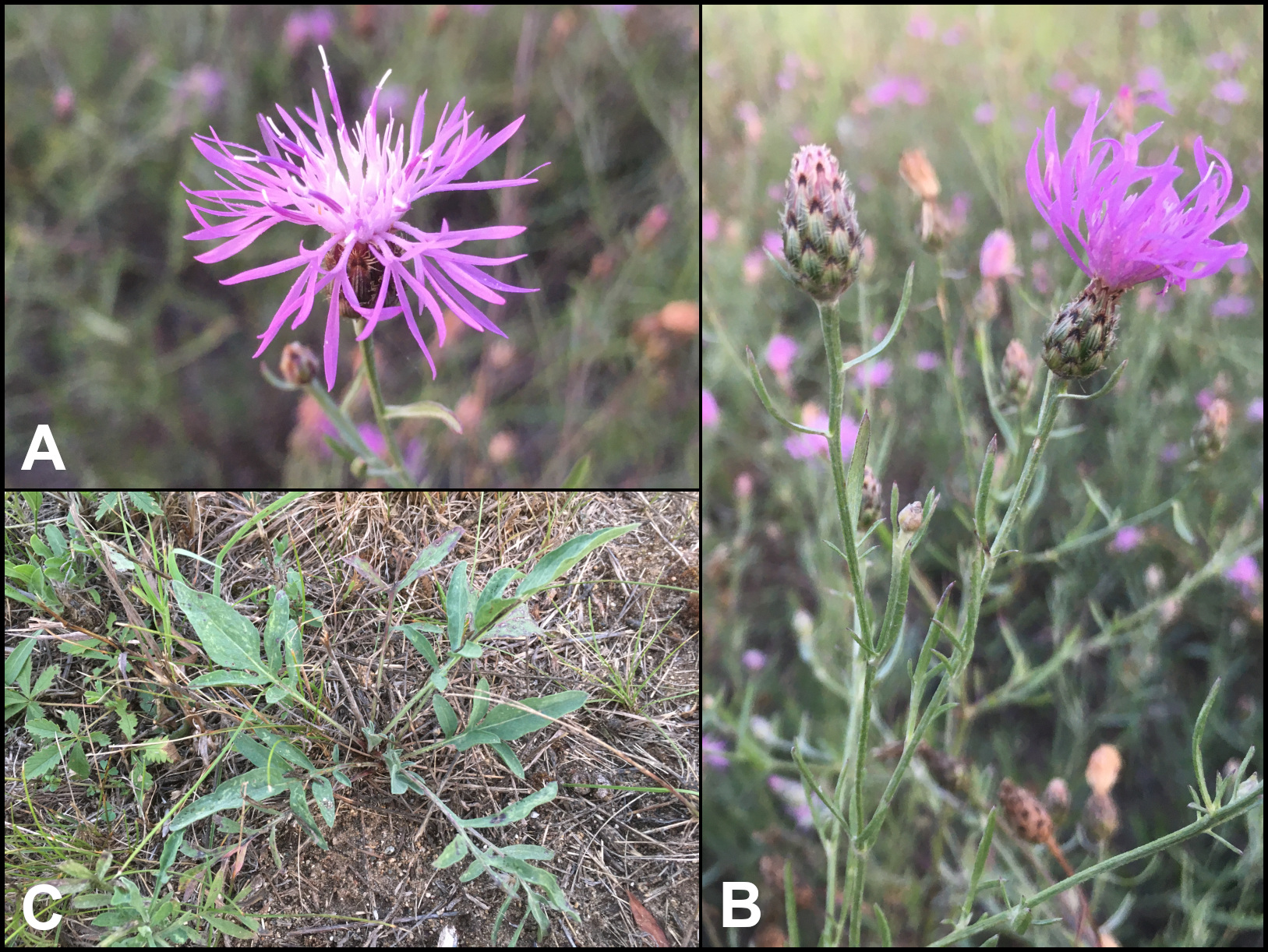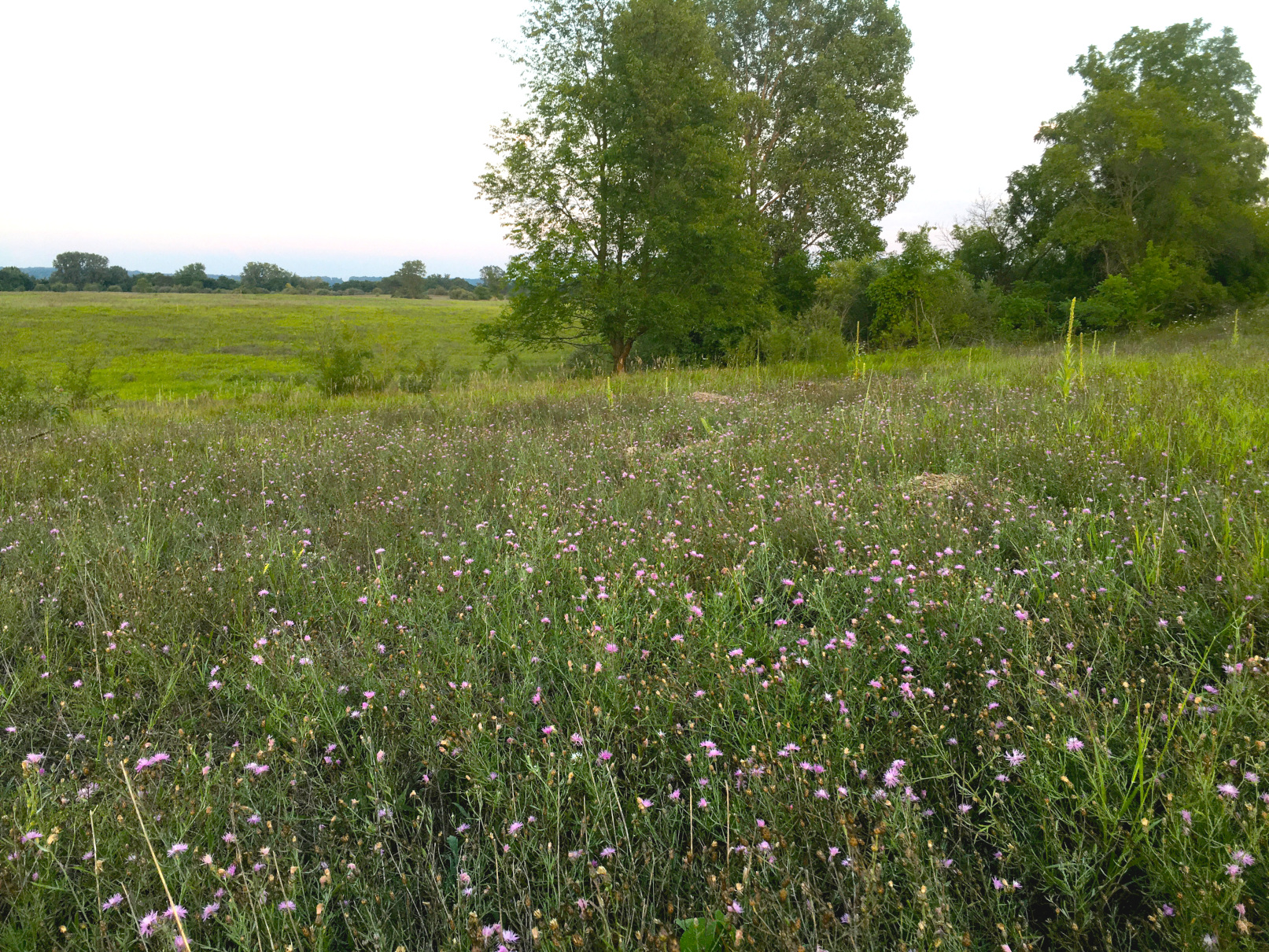Drive-by botany: Purple loosestrife and spotted knapweed
Profiles of common Michigan roadside flora in mid-August 2021.

Authors’ note: Drive-By Botany is a continuing series that highlights flowering plants commonly seen from the road. As a service to new readers, we include the introduction with each article. If you're already familiar with the premise, feel free to skip down to the good stuff.
Has a patch of flowers ever caught your eye as you travelled down the road? It certainly happens to us all the time! As gardeners and naturalists, we're always interested increasing functional diversity in our gardens and landscapes, so we thought it would be fun to consider some of the roadside plants that we see every day. Each article in this series will feature two plant species that are currently blooming and frequently observed from the road. Our goal is to answer two simple questions:
- What are they?
- Would they make good garden plants?
As part of the process, we'll include some biological tidbits and a few useful characteristics for identification. Please note that some of the plants we feature are exotic invasive species; we'll be sure to include recommendations from land management professionals on how to manage them in your landscape.
August 2021 - week 33, growing degree days (GDD) 4,267 East Lansing, Michigan (base 32)
Purple loosestrife (Lythrum salicaria)
Purple loosestrife is a persistent invasive plant that is responsible for bright swaths of magenta you may pass driving along the road. It was introduced in the 19th century by beekeepers and for its colorful flowers. It is now is a restricted species due to its vigorous spreading habit that crowds out native species in the wetland habitats it prefers. It is It is a member of the Lythraceae family.
Description
Flowers: Numerous and showy spike-like inflorescences with magenta flowers. Flowers have five to seven petals and grow in pairs/clusters on the spike. Flowers may also be white or light pink.
Leaves: Lance-shaped and almost linear. Leaves are often oppositely arranged along the stem in pairs with sessile attachment, or sometimes clasping around the stem.
Stem: Angled with four to six sides. The stem may have dense hairs or appear hairless.

Seeds/Fruit: Produces many small seed pods along the inflorescence spike that contain numerous seeds.
Height: Varies from 1.5 feet to 6 feet.
Distribution: Purple loosestrife is widespread and has been documented in 53 Michigan counties. It prefers wetlands and wet soil and can be found on disturbed sites such as roadsides, near rail roads, filled land, vacant lots, clearings as well as shores and open banks.
Blooming period: In Michigan, purple loosestrife blooms from July into October.
Native status: Exotic/introduced. This species is not native to the United States. It was first collected in Michigan in 1879 (Muskegon County) and has since become naturalized.
Garden uses: Purple loosestrife is restricted under Michigan law. If you are looking for a plant with similar habit preference and flower color, consider marsh blazing star (Liatris spicata) or swamp loosestrife (Decodon verticillatus). Swamp loosestrife colonizes in moist soil near shorelines and is considered a perennial shrub. If you are working with a small garden space, it may not be a good choice due to size. The Michigan Natural Shoreline Partnership has plant lists available if you are looking for smart shoreline plant options: MNSP Recommended Plant List.
If managing purple loosestrife in a location, monitoring the flowering progress can helpful when deciding about control. Pulling plants before they are done blooming and begin producing seeds can help prevent them from spreading. Purple loosestrife can reproduce asexually from cuttings or pieces of rootstock. Due to this, it is best to burn the pulled plants or dispose of them in closed plastic bags in the trash. If treating with a foliar herbicide, treating after peak bloom around August can be effective. Permits are often required when using an herbicide near bodies of water to help ensure proper use and protection of our water resources. Visit the EGLE website for more information.
Galerucella beetles (G. calmariensis, G. pusilla) have also been introduced throughout Michigan to provide effective biocontrol. Information on this effort can be found in this article from MSU Extension: Hungry beetle puts balance back in nature.
Common look-alikes: Marsh blazing star (Liatris spicata), prairie blazing star (Liatris pycnostachya), blue vervain (Verbena hastata), hoary vervain (Verbena stricta), fireweed (Chamaenerion angustifolium).
Spotted Knapweed (Centaurea stoebe)
Common names: star thistle
Spotted knapweed is member of the aster family (Asteraceae), one of the two largest plant groups in the botanical kingdom (you can read more about what makes the aster family so special in our chicory profile). It is an exotic species that rapidly invades dry natural areas and appears to drive dramatic ecological changes within local plant communities. Researchers, land managers, and naturalists have all noted a distinct reduction in the diversity and abundance of native plant species following the establishment of spotted knapweed.
Description
Flowers: Spotted knapweed flowers are vibrantly pink and purple with a shape that is highly reminiscent of thistle blooms. In Michigan, the petals tend to be purple towards the outer tips and gradually change to a pinkish-white color towards the center of the flower head (Photo 3). The base of the flower head, also known as the involucre, is often tear- or egg-shaped with black "spots". These spots are actually the black-colored tips of individual bracts that compose the involucre (Photo 3).
Quick definitions: An involucre is a tight grouping of bracts. They are common structures in the aster, teasel, carrot and buckwheat families. Bracts are leaf-like structures that we associate most readily with flowers. They are usually located directly below the petals and enclose the precious reproductive structures as the young bud develops.
Leaves: The leaves of Centaurea stoebe are grayish-blue-green and are arranged alternately along the stem. This species is usually considered a short-lived perennial and starts out the first season as a basal rosette with leaves that can range from 3-6 inches long (Photo 3). In subsequent years, the plant bolts, sending up flowering stems with lower leaves that resemble the rosette foliage but gradually becoming smaller, less divided, and more linear further up the stem. The leaves have a rough feeling and are covered with fine hairs.
Seeds/fruit: Seeds are produced in the bottom-half of the flower head. Once it matures, the seed head opens at the top, allowing nature to carry the seeds away on the wind or on animals as they walk by. Spotted knapweed seeds are under 0.25 inches in length, notched on one side, and have tufts of bristles that catch the wind.

Distribution: Centaurea stoebe has been documented in 76 counties within the state of Michigan and 45 states in the U.S. It will grow in a variety of habitats but seems to thrive in coarse dry soils and disturbed areas (Photo 4). Once established, it will spread into old fields, prairies, open forests and similar places in which it is exposed to abundant sunlight.
Blooming period: Spotted knapweed usually starts to bloom around mid-July in Michigan and continues through August.
Native status: Exotic/Introduced. This species is not native to the United States. It was first recorded in Michigan in 1911.

Garden uses: Spotted knapweed has been declared a noxious weed in at least 15 states including Michigan. As previously noted, C. stoebe displaces native plant species, which can lead to a dramatic decline in biodiversity across the local plant, animal, and soil microbial communities. It is particularly problematic in the northwest rangelands where it severely reduces foraging quality for livestock. This species should not be propagated.
Management: Management can be difficult. Spotted knapweed reproduces almost exclusively by seed, so any methods that prevent the plant from producing seed will reduce local populations over time. For those that want to learn more, Montana State University has created an excellent bulletin that provides specific recommendations for spotted knapweed management.
Look-alikes: White-flowered knapweed (Centaurea diffusa), Russian knapweed (Rhaponticum repens).
Want more drive-by botany?
Check out some of our recent roadside adventures!
- Chicory and common mullein
- Poison hemlock and perennial pea
- Golden Alexanders and Arrowwood viburnum
Questions? Feel free to contact Jeremy Jubenville or Isabel Branstrom with the MSU Extension floriculture team.
Resources
- Michigan Flora (2001) – E. Voss
- Centaurea stoebe subsp. micranthos (updated 2019) - CABI Invasive Species Compendium
- “A Lack of Evidence for an Ecological Role of the Putative Allelochemical (±)-Catechin in Spotted Knapweed Invasion Success”. Blair et al. 2006. Journal of Chemical Ecology 32: 2327-2331.



 Print
Print Email
Email




